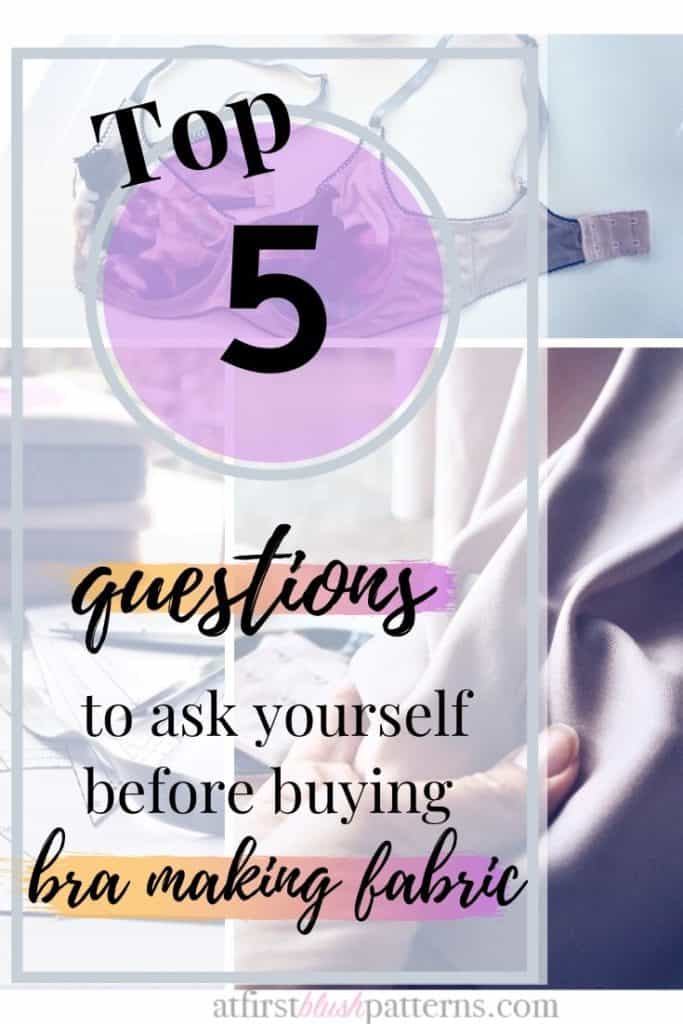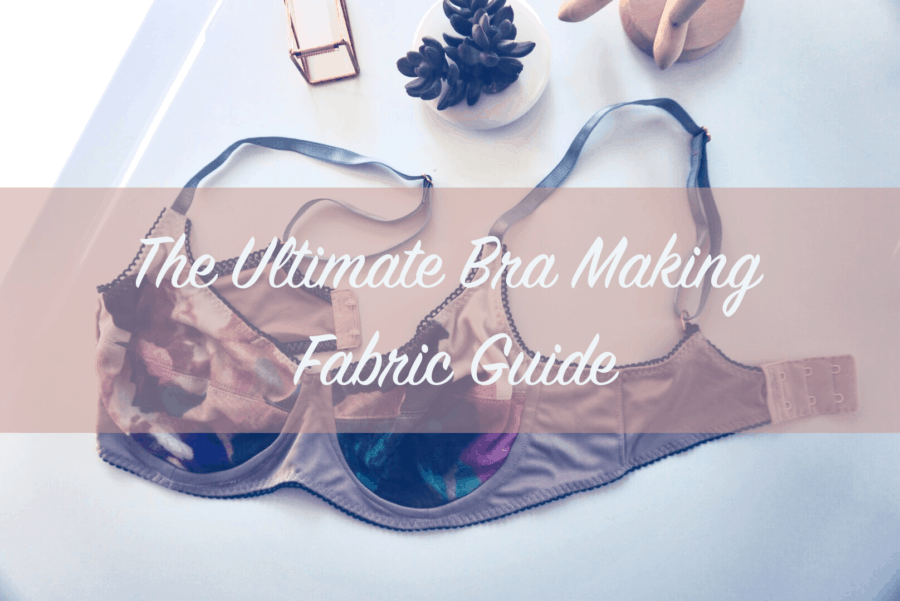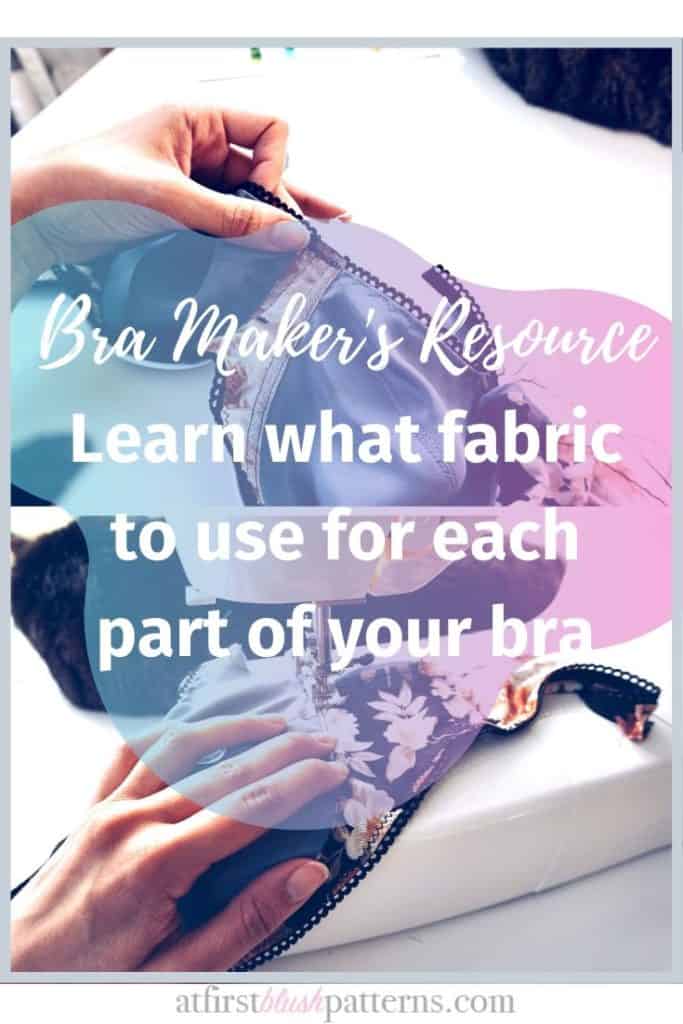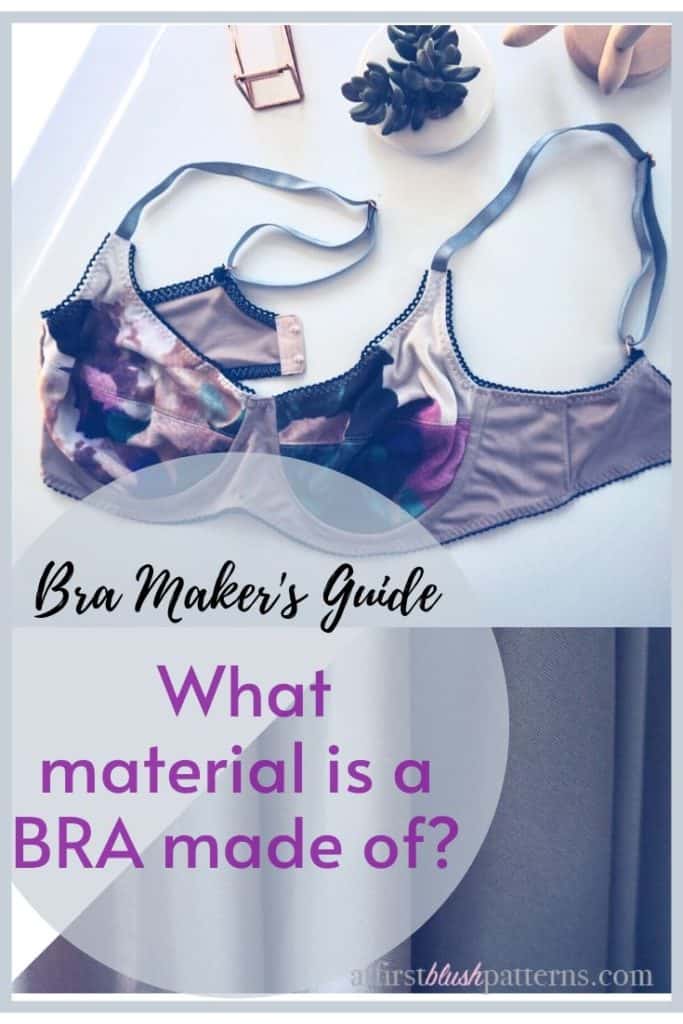If you are a first time bra maker then you might have a few or many questions on what to look for in fabrics for this new adventure. Bra making can be daunting and the fabric selection can be confusing. Even more so, where do you even find all this stuff? Don’t worry! I have put together a quick guide on best fabrics for bra making and where to get them to assuage the anxiety for all of you first time bra makers out there!
What material is a bra made of?
Bras are made of a combination of different fabric and notions. These include fabric with little to no stretch such as a tricot, duoplex, or simplex fabric and fabrics with stretch including power net, power mesh, or stretch spandex. Some bras include a bra lining fabric such as stretch mesh, 15 denier nylon or sheer bra cup lining. Bras also consist of a hook and eye closure, bra straps, underwire and underwire channeling, and other elastics such as picot or foldover elastic.
Fabrics with Little to No Stretch
If this is your first time sewing a bra the best fabric for you to try is a duoplex, tricot, or a jersey knit.
- Duoplex is a low-stretch knit fabric made of 100% polyester. It is ideal for your first attempt in bra making because it is stable enough that you do not need to line the cup when using this fabric.
- Simplex is a nylon knit with minimal stretch commonly used without a lining or for swimsuits.
- Tricot is a run-resistant knit that is thin and smooth in texture yet durable enough for lingerie, swimwear or sportswear. Tricot can be made of 100% polyester like the duoplex variety or nylon. Note that duoplex and simplex are a type of tricot fabric.
Fabrics with Stretch
- Power Net/Power Mesh: These two terms are often used interchangeably; however, power net is more dense than power mesh. They are both strong supportive fabric that can have varying degrees of stretch with great recovery. This fabric is ideal for shapewear as it conforms to the natural contours of your body perfect for a bra band.
- Stretch Spandex is a lightweight knit with spandex fibers that has a firm stretch. It conforms to your body’s contours while allowing you to comfortably move and breathe when used as a band.
- Jersey Knit is a single knit stretch fabric commonly used for t-shirts or underwear. This fabric is recommended for smaller cup sizes.
Fabrics for Bra Cup Lining
- 15 Denier Nylon is a sheer lightweight fabric with light support. It is 100% nylon and it is recommended that you cut on bias because stretch on the cross grain of stretch. What is denier? Denier refers to the fiber thickness of individual threads. A fabric with high denier count is thick, sturdy and durable while a low denier count is sheer, soft, and silky. (Source: www.standardfiber.com)
- Stretch Mesh is made of nylon and spandex. It is a versatile fabric that
is primarily used in bra making to line a stretch lace cup. - Sheer Bra Cup Lining is a strong, supportive 100% nylon fabric. It is ideally used to line under stretch lace or sheer fabric. It can also be used for the bridge because of its minimal to no stretch characteristics.
Did you know? Lining is also known as a stabilizer fabric. This type of fabric should be sheer and firm with no stretch. It is typically used to stabilize the bridge and frame of the bra. Lining is not necessary for duoplex, tricot or simplex fabric
Need to stabilize your fabric? Here are some quick tips:
- Use a strong, rigid sheer fabric. If it has any stretch including mechanical stretch on the cross grain then cut on the bias.
- You should reinforce lace or sheer bra cups to diminish the stretch of the lace or sheer fabric and provide adequate support.
What Fabric to Use for Each Part of Your Bra?
When sewing your first bra it is important to understand the components of a bra so you can better understand what type of fabrics are best for constructing a bra. You will use a combination of fabrics for these four areas depending on the mechanics of each piece.

- Cups: Hold the breast in place and shape the breast tissue. There are a variety of cup designs that can be made with soft or firm fabric. Bra cups designs can have seams or be seamless. They can also be supported by underwire. Fabric requirements: Little to no movement such as a duoplex, tricot, or simplex. Fabric will likely contain polyester, nylon, cotton or spandex.
- Frame: The frame is the component of the bra that wraps around the front of your body and cradles the bra cups. It connects to the band at the side seam and to the bridge at the center front. Fabric requirements: Little to no movement such as a duoplex, tricot, or simplex. Fabric will likely contain polyester, nylon, cotton or spandex.
- Bridge: The bridge is the portion of the bra that sits between the cups and the frame. Fabric requirements: Little to no movement such as a duoplex, tricot, or simplex. Fabric will likely contain polyester, nylon, cotton or spandex.
- Band: The band component is connected to the frame of the bra and wraps around the body then fastens in the back. The band is sometimes referred to as the “wings”. Fabric requirements: Fabrics with firm stretch such as a powernet or powermesh, or stretch spandex fabrics work well. Depending on how tight you want the band, stay within a moderate to low stretch fabric. 50%-30% should work well. You do not want the fabric to be too stretchy or too tight because it will either ride up your back or be too uncomfortable to move around in.
How To Know You Are Buying the Right Fabric
Ask yourself these simple questions:
- Is this fabric for the cup, frame, bridge, or band?
- If it is for the cup, frame, or bridge – does it have little to no stretch? If it does have stretch like a lace or sheer fabric then remember to buy lining.
- If it is for the band- does it have enough stretch to move with your body but recovery well?
- Is the fabric breathable?
- Is the fabric lightweight yet comfortable?

Your main concern when choosing the best fabric for your bra is how much movement the fabric contains. Each component of your bra serves a different purpose. For example, your cups are meant to hold the breast in place and shape it. This requires fabric with very little to no stretch. You will also want comfortable, breathable fabric to allow the breast tissue to breathe and avoid sweat that could alter the fibers in the cups’ fabric. Ideally, you would choose a fabric that is lightweight, smooth and durable allowing you maximum comfort and versatility so you can wear your bra under almost any fabric.
The frame and bridge of your bra will also require very little to no stretch as they support the cups. The band will require the most stretch so that it can conform comfortably to your body as you move around. However, you do not want too much stretch because this may cause the band to move up your back distorting the overall fit. An ideal band fabric will have a firm stretch while still maintaining comfort and breathability. Choosing a fabric that is lightweight and smooth is another consideration for all bra components as well. Keep that in mind when selecting your fabrics.
Where can I find these materials?
There are many great online retailers where you can find these fabrics. I have compiled a Recommended Fabrics page for your convenience with my personal recommendations.
Happy bra making!
Do you have more bra making or lingerie sewing questions? Please leave your suggestions below for more helpful topics that I can write about!
Want to save this guide? Pin it for later!







